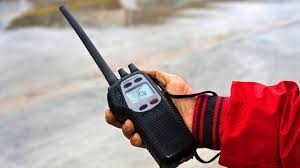
175 Dogs Rescue from Hoarders in Slidell Mississippi 2011 Episode
Introduction
In 2011, one of the most significant and disturbing cases of animal hoarding came to light in Slidell, Mississippi. Authorities uncovered a shocking scene where 175 dogs were found living in inhumane conditions, sparking a massive rescue effort that would not only save lives but also shed light on the realities of animal hoarding. The 175 dogs rescue from hoarders in Slidell Mississippi 2011 episode was a turning point in local animal welfare awareness and enforcement.
How the Hoarding Situation Was Discovered
The case began when concerned neighbors reported foul odors, persistent barking, and an overwhelming number of animals on a residential property. These observations prompted an investigation by local law enforcement and animal control. Upon arrival, officers were horrified to find dozens of dogs packed into small, filthy enclosures, many with untreated injuries and clear signs of neglect.
Inside the Rescue Operation
The scale of the rescue operation was massive. Multiple local animal rescue organizations collaborated, including veterinarians, volunteers, and shelters. Each dog had to be safely removed, assessed, and transported to a clean environment. Temporary shelters were set up to manage the intake of the animals.
Organizations Involved
- St. Tammany Humane Society
- Local veterinary clinics
- Volunteer animal advocates
- Animal control units
Timeline of Events
| Date | Event |
| April 2011 | Initial complaints received from neighbors |
| May 2011 | Authorities raided the property |
| May-June 2011 | Rescue, relocation, and care begins |
| Late 2011 | Adoption and legal proceedings underway |
Medical and Behavioral Evaluation
Many of the dogs were suffering from severe malnutrition, mange, infections, and behavioral trauma. Immediate medical care was administered by veterinarians. Beyond physical care, the dogs showed signs of psychological distress such as fear of humans, aggression, and isolation.
Common Health Conditions Treated:
- Parasitic infections (fleas, ticks, worms)
- Skin conditions (mange, fungal infections)
- Malnourishment and dehydration
- Dental disease and infections
Veterinarians worked diligently to rehabilitate the dogs, implementing long-term care plans.
Rehabilitation and Recovery Process
Rehabilitation involved more than physical healing. Many of the dogs had never interacted with people or experienced normal pet environments. Socialization was a key step. Foster homes played a vital role by providing individual care and attention.
Behavioral training programs were introduced to rebuild trust and teach the dogs basic commands. In some cases, recovery took months, but the determination of rescuers led to many success stories.
Adoption and New Beginnings
Once the dogs regained stability, a large-scale adoption campaign was launched. Potential adopters were screened carefully, ensuring the dogs were placed in safe, loving homes. Many dogs found forever homes, while others were placed in long-term foster care due to ongoing medical needs.
Success Story Example
One notable case was “Buddy,” a terrier mix who was extremely fearful. After three months in a foster home, he became affectionate and was later adopted by a family with children.
Legal Action and Mental Health Implications
Legal proceedings were initiated against the individual responsible for the hoarding. The court found that the hoarding stemmed from untreated mental health conditions. This raised awareness about the psychological elements of animal hoarding and emphasized the need for intervention and support services.
Legal Outcomes:
- Charges of animal cruelty filed
- Mental health evaluation mandated
- Permanent ban on pet ownership for the hoarder
Community Impact and Awareness
The 175 dogs rescue from hoarders in Slidell Mississippi 2011 episode became a catalyst for community action. Residents came together to support the rescue through donations, supplies, and volunteer work. Media coverage further highlighted the importance of early reporting and responsible pet ownership.
Educational outreach programs were introduced in schools and community centers to prevent future hoarding cases.
How to Prevent Animal Hoarding
Prevention begins with education and awareness. Knowing the signs of animal hoarding and acting early can save lives. Here are steps anyone can take:
Warning Signs of Animal Hoarding:
- Strong odors from a residence
- Numerous animals with visible neglect
- Isolated individual with little outside contact
What You Can Do:
- Report suspicious activity to local animal control.
- Offer support to individuals showing hoarding behavior.
- Promote spay/neuter programs to reduce overpopulation.
Additional FAQs (Not Covered in Article Content)
- How do rescuers safely remove animals from hoarding conditions? They use protective gear, humane traps, and sedation when necessary to ensure both animal and human safety.
- What happens to animals that can’t be adopted? Some remain in permanent foster care or sanctuary environments where they receive lifelong support.
- How long does a hoarding investigation typically last? It varies, but most take several months from report to legal resolution due to the complexity of animal welfare laws.
- Can neighbors face legal issues for not reporting suspected hoarding? Not typically, but failing to report can lead to prolonged suffering of animals. It is always encouraged to speak up.
- Do hoarding cases only involve dogs? No, hoarding can involve cats, birds, reptiles, or even farm animals. Dogs are just the most commonly reported.
Conclusion
The 175 dogs rescue from hoarders in Slidell Mississippi 2011 episode serves as a powerful reminder of both the cruelty some animals endure and the extraordinary capacity for compassion within our communities. The rescue not only saved lives but sparked change in how animal welfare is approached. By recognizing the signs, acting responsibly, and supporting local shelters, we can help prevent future tragedies and ensure a safe world for all animals.
Recommended Articles
Friendship Fire Company Barbershop Quartet Everard PBS – A Harmony of Heritage and Heart
The Ultimate Guide to the Songbird Serenade AI Voice Model
NBA 2K23 Chuma Okeke Cyberface: The Ultimate Guide to His Realistic In-Game Look


